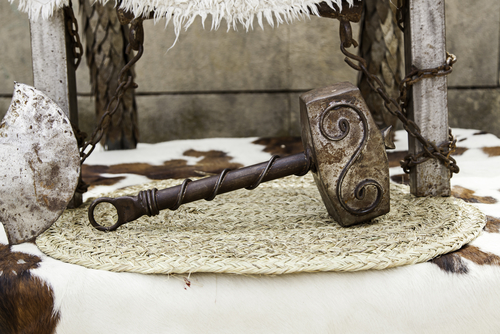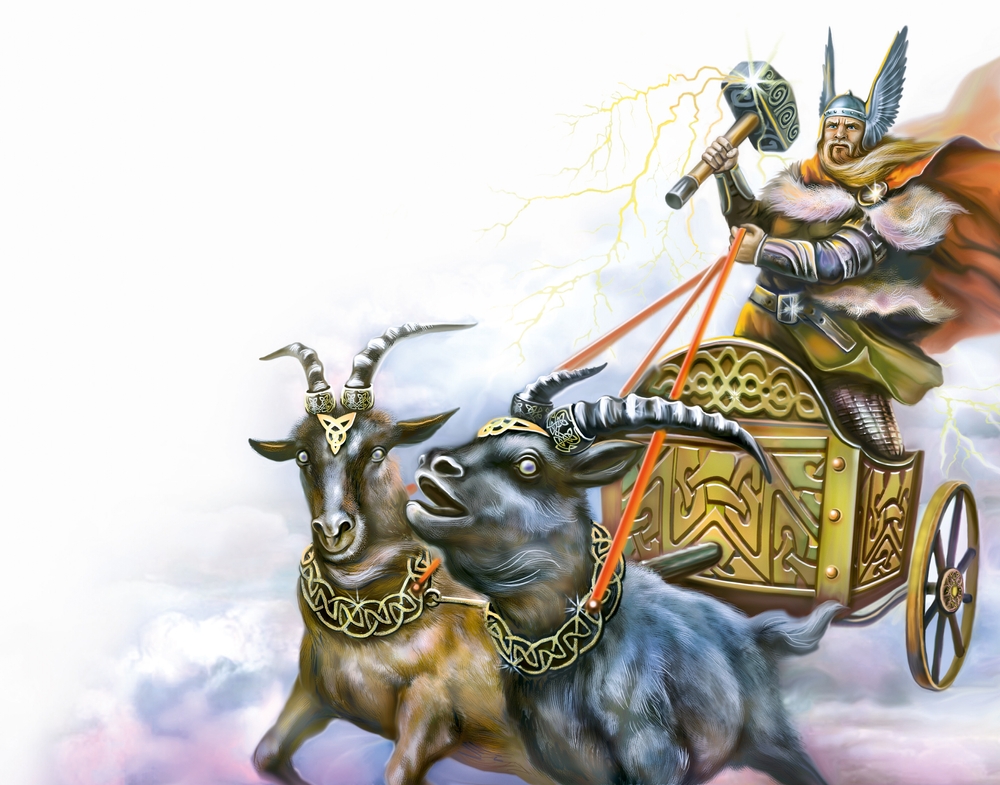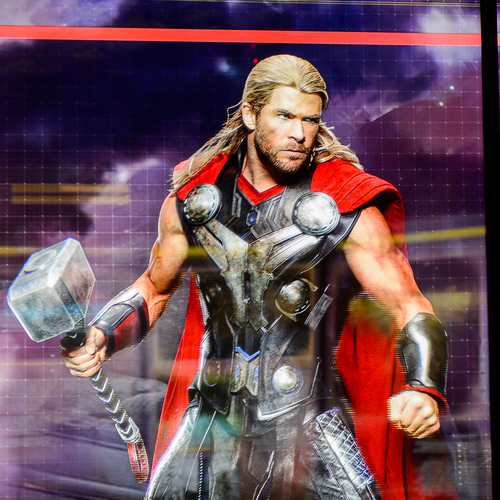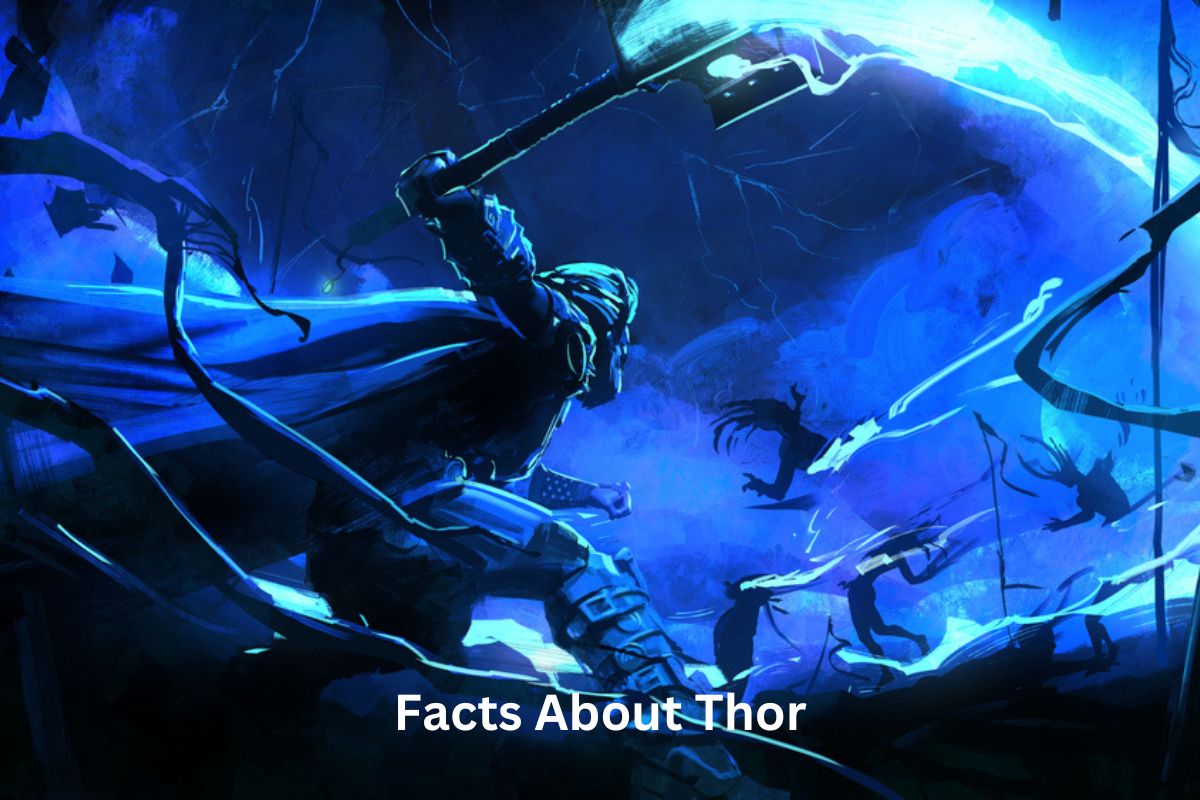Thor, often referred to as the Viking god of thunder, is a prominent figure in Norse mythology. He is known for his association with thunder, lightning, storms, and strength, making him a formidable and revered deity in the pantheon of Norse gods.
As the son of Odin, the chief of the gods, Thor plays a crucial role in protecting both the divine realm of Asgard and the world of humans from various threats, including giants and supernatural forces.
His iconic weapon, the mighty hammer Mjölnir, symbolizes his power and authority, while his red-bearded, warrior-like appearance adds to his imposing presence.
Thor’s enduring legacy extends from ancient Norse tales to contemporary culture, where he remains a beloved and recognizable character in various forms of media and storytelling.
Thor Facts
1. Norse god of thunder and lightning
Thor is a prominent deity in Norse mythology, which originates from the pre-Christian beliefs of the Germanic peoples in Scandinavia.
Also Read: Facts About Norse Mythology
He is revered as the god of thunder, lightning, and storms, which were often considered powerful and uncontrollable natural forces in ancient times.
Thor’s association with thunder is emphasized by the loud rumbling sounds of thunder being attributed to the rolling of his chariot across the sky.

2. Wields the powerful hammer Mjölnir
Thor’s most iconic attribute is his mighty hammer, Mjölnir. It is renowned for its immense power and was said to be so heavy that only Thor, with his incredible strength, could wield it.
Also Read: Freyja Facts
Mjölnir is not only a weapon but also a symbol of protection and righteousness. It is often used by Thor to defend the gods and humanity from various threats, including giants and monsters.
The hammer has the ability to control lightning and is known to return to Thor when thrown, making it a formidable tool in his battles.
3. Son of Odin and Fjörgyn
Thor’s parentage is a significant aspect of his character in Norse mythology. He is the son of Odin, the Allfather and chief of the Aesir gods, and Fjörgyn (also known as Jord), the personification of the Earth.
This parentage reflects Thor’s strong connection to both the celestial and earthly realms, making him a bridge between the two.
As Odin’s son, he inherits many of his father’s qualities and responsibilities, such as defending Asgard (the realm of the gods) and representing the interests of the Aesir.
4. Known for his red beard and warrior prowess
Thor is often depicted as a burly, red-bearded god in Norse mythology. His rugged appearance is a symbol of his strength and robust nature.
As a warrior god, Thor is known for his fearlessness in battle. He’s not only a protector of the gods and humans but is also a formidable adversary to the giants and other supernatural creatures who threaten the Norse cosmos.
Thor’s bravery and fierce combat skills are celebrated in numerous myths and sagas, where he engages in epic battles to safeguard his realm and the world of humans.

5. Protector of humans and gods
Thor’s protective role extends to both the divine realm of the gods (Asgard) and Midgard, the realm of humans. He defends against threats from giants, monsters, and chaotic forces that could disrupt the natural order.
Thor’s dedication to the well-being of humans is evident in his readiness to intervene on their behalf, even traveling to Midgard to assist them when necessary.
His reputation as a guardian figure has made him a symbol of safety and security in Norse mythology.
6. Sacred connection to oak trees
Oak trees held a special significance in the worship of Thor. They were considered sacred to him, and their association with the god reflects his strength and steadfastness.
Thor’s hammer, Mjölnir, was sometimes depicted with oak leaves and symbols, reinforcing the connection between the god and the oak tree.
In some rituals and ceremonies, people would make offerings to Thor beneath oak trees to seek his protection and blessings.
7. Central character in Norse myths and sagas
Thor is a central and beloved character in Norse mythology, featuring prominently in numerous myths and sagas.
One of the most famous stories involving Thor is his battle with the World Serpent, Jörmungandr, during Ragnarök, the prophesied end of the world. In this epic clash, Thor manages to slay the serpent but succumbs to its venom shortly afterward, symbolizing the cyclical nature of life and death in Norse belief.
Thor’s exploits also include quests to recover stolen treasures, encounters with giants, and his constant efforts to maintain order in the cosmos.
8. Popular Marvel Comics character
Thor’s popularity extends beyond mythology, thanks in large part to his presence in Marvel Comics. He made his comic book debut in “Journey into Mystery” #83 in 1962.
In the Marvel Universe, Thor is a superhero with godly powers who fights alongside other iconic characters like Iron Man, Captain America, and the Hulk as a member of the Avengers.
Marvel Comics reimagined Thor as a modern-day hero who wields Mjölnir to protect Earth from various threats, including supervillains and cosmic forces.

9. Portrayed by Chris Hemsworth in the MCU
Thor’s popularity soared even higher with his inclusion in the Marvel Cinematic Universe (MCU). Actor Chris Hemsworth portrayed Thor in a series of films.
The character’s portrayal in the MCU combines elements of Norse mythology with a more contemporary and humorous take on the god of thunder. Thor’s character evolves throughout the films, showcasing his growth as a hero and a leader.
Some of the notable films featuring Thor include “Thor,” “The Avengers,” “Thor: The Dark World,” “Thor: Ragnarok,” and “Avengers: Endgame.”
10. Iconic figure in modern pop culture
Thor has become an iconic figure in modern pop culture, recognized by people worldwide. His distinctive appearance, hammer, and heroic deeds have made him a symbol of strength and heroism.
Beyond comics and movies, Thor’s influence can be seen in various forms of media, including animated TV shows, video games, merchandise, and even references in literature and music.
The character’s enduring popularity showcases his timeless appeal and the way he continues to resonate with audiences of all ages.
